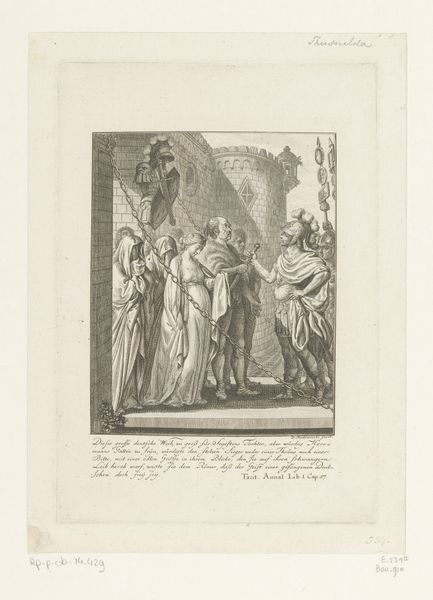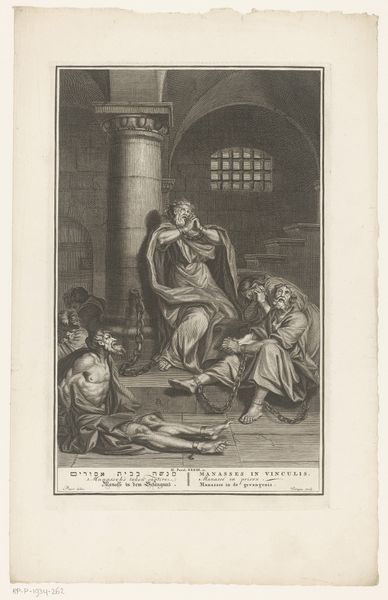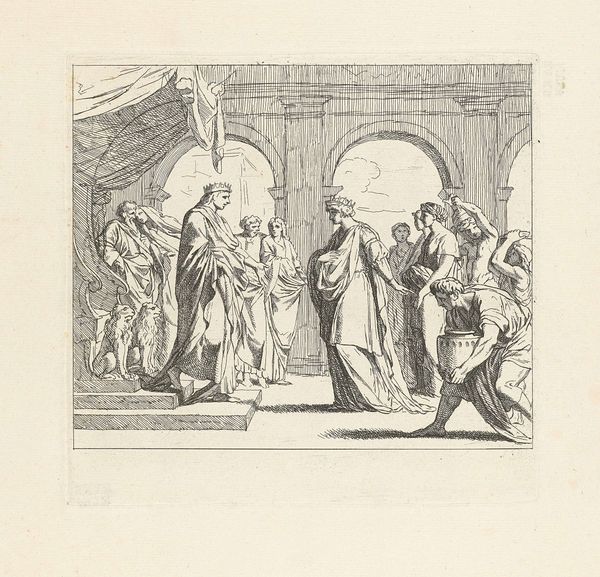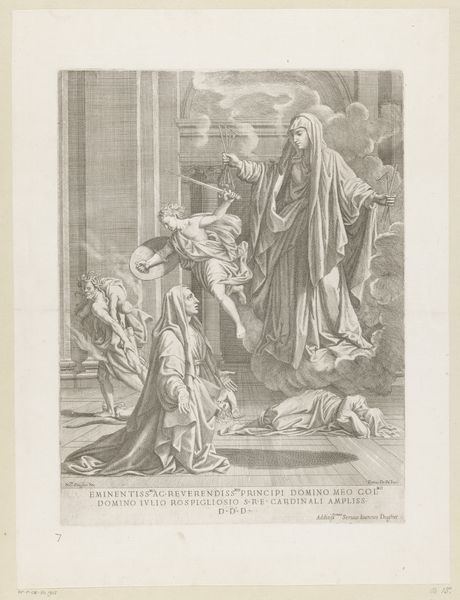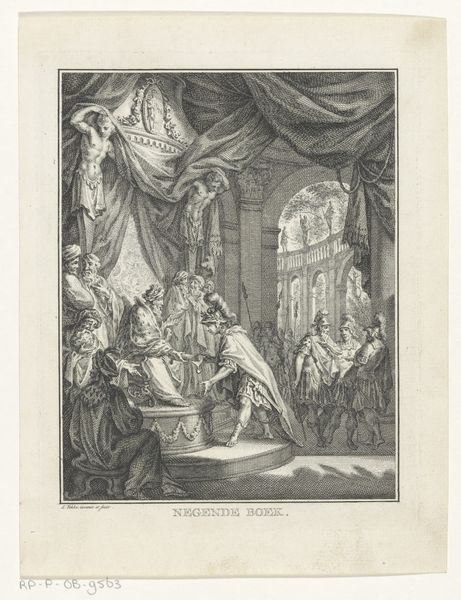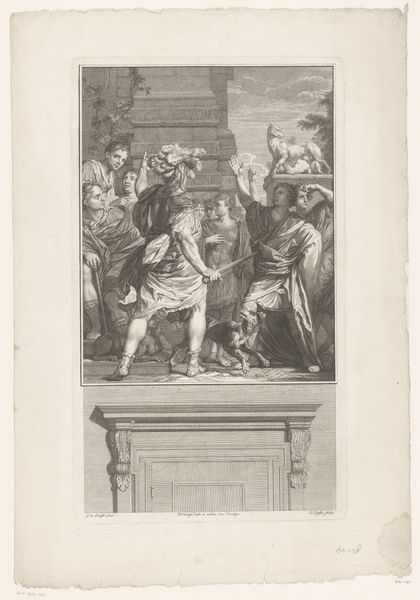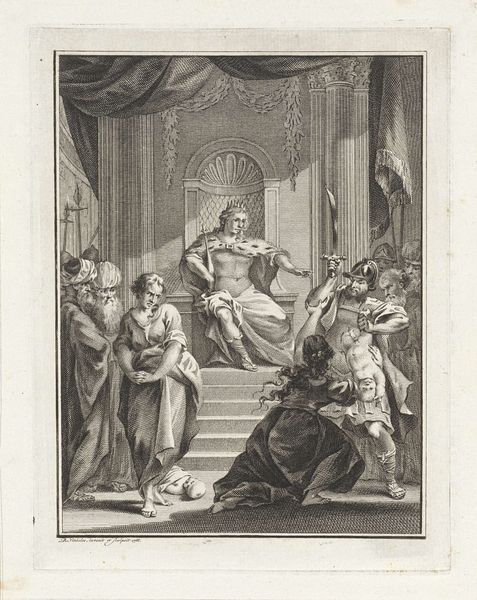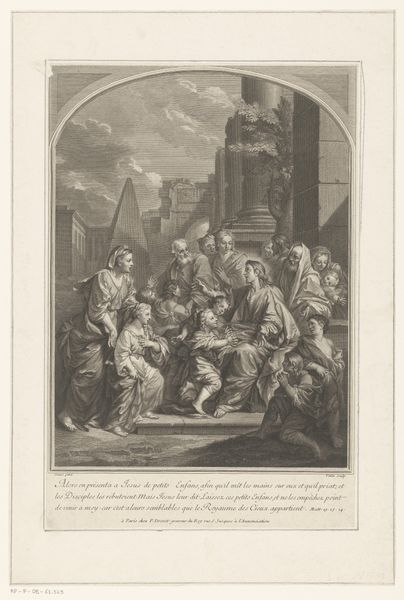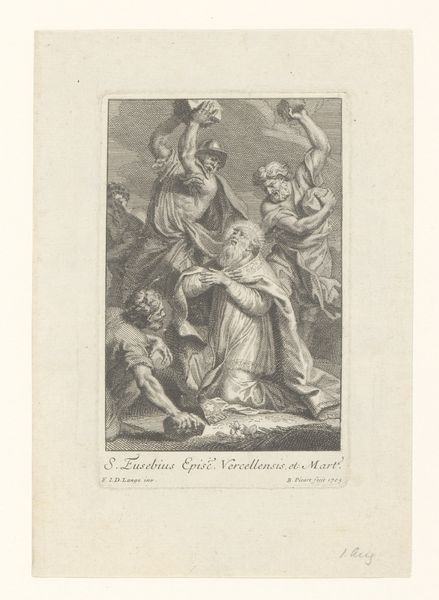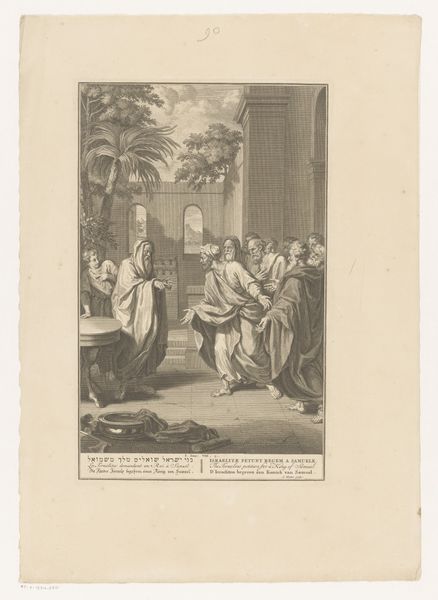
#
pencil drawn
#
aged paper
#
light pencil work
#
photo restoration
#
pencil sketch
#
old engraving style
#
personal sketchbook
#
old-timey
#
19th century
#
pencil work
Dimensions: height 342 mm, width 224 mm
Copyright: Rijks Museum: Open Domain
Editor: Here we have "Visitatie" by Claude Duflos, dating somewhere between 1675 and 1727. It's a pencil drawing, and I’m struck by its delicate lines, and aged paper gives it a sense of history. What do you see in this piece? Curator: Well, immediately I’m drawn to the representation of these women, Mary and Elizabeth. It depicts the Visitation, a significant moment in Christian theology, but it's crucial to look beyond the surface. Consider the implications of depicting female relationships of that time. How did societal expectations influence artistic representation, and what message might Duflos be conveying about female solidarity? Editor: So, it’s not just a religious scene; it also reflects social dynamics? Curator: Exactly. We have to think about gender roles and power structures inherent in that historical moment. Notice how Elizabeth, though older, welcomes Mary. Could that pose an argument for how wisdom acknowledges potential? What narrative of female strength is built around their interactions and bodies, challenging and or upholding conventional norms of womanhood. Editor: That’s fascinating. I hadn't considered the gender dynamics within a biblical context. I guess it pushes the art's purpose beyond religious teaching? Curator: Precisely! We should ask, what function can art have beyond conveying established dogmas? Here, could art serve as an opportunity to reconstruct ideas around kinship and gender? Thinking of the historical setting as a conversation is the key to seeing what is present. Editor: Wow, this perspective really shifts my view of older artwork. It’s all connected! Curator: Precisely, by looking beyond the subject matter, by situating artwork inside of movements that represent us all, it shows that artwork’s voice never fades.
Comments
No comments
Be the first to comment and join the conversation on the ultimate creative platform.
